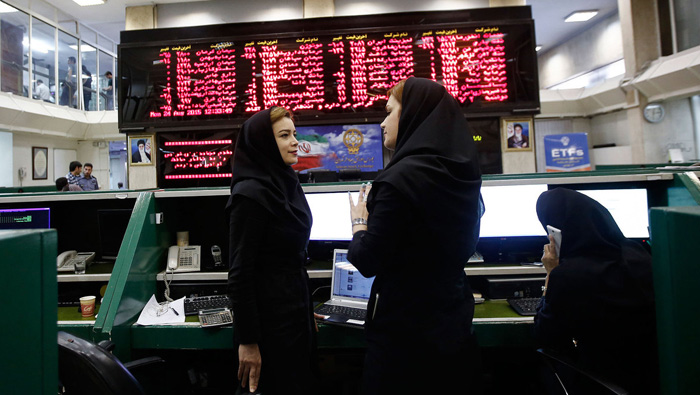
Tehran: Iran is exploring a return to international debt markets for the first time since 2002, a senior government official said, as the Islamic republic seeks to finance an economic recovery a year after a historic nuclear deal that offered it a route out of isolation.
Economy Minister Ali Tayebnia, whose ministry is at the forefront of securing Iran’s access to the global financial system, said in an interview in Tehran that he expects his country to secure a credit rating in the “near future,” a step that could help attract bond investors. Iranian officials are “negotiating with all the rating agencies,” he said.
Ten months before his first term ends, Iranian President Hassan Rouhani is seeking to turn his landmark diplomatic success into tangible economic benefits for Iran’s 80 million people. His bid to lure billions of dollars in foreign investment needed to rebuild infrastructure has been hindered by the concern of global banks they might fall foul of United States Treasury sanctions not lifted under the July 2015 accord. Tehran has also heavily criticised moves by Republican lawmakers in Washington to roll back the deal.
“In the area of banking relations, especially big banks, we are still faced with some problems,” Tayebnia said. “However, some of these problems, gradually and over time, will be resolved.”
Last frontier
Iran agreed to dismantle key parts of its atomic programme under the July 2015 deal in return for the removal of most sanctions. The agreement averted a possible military confrontation by eliminating Iran’s capacity to develop nuclear warheads, weapons the country denied seeking.
For many investors, it also meant the possibility of opening up one of the world’s last major untapped frontier markets.
Iran last issued international debt in July 2002, according to the International Monetary Fund. Officials from Fitch Ratings visited the country in June to make an initial assessment of the economy, Akbar Komijani, a deputy central bank governor, said in an interview on June 30. The company said in March it was in discussions with the Islamic Republic but declined to elaborate.
Fitch withdrew its B+ sovereign rating, the fourth-highest junk grade, for Iran in 2008 following the maturity and full repayment of its last sovereign Eurobond that year. Moody’s withdrew its B2 rating on Iran in 2002, according to data.
Race to sell
“Right now, the groundwork for issuing bonds and various Iranian debt securities in international markets exists,” Tayebnia said. He didn’t elaborate on the potential size and timing of the possible sale. The Opec member would join other major oil producers that have rushed to the bond market in an effort to repair public finances battered by the plunge in crude prices.
Abu Dhabi, the capital of the United Arab Emirates, raised $5 billion in April, shortly before Qatar tapped investors for almost double that amount. Saudi Arabia, Iran’s main political rival in the region, has hired banks to help arrange its first international bond sale, according to people familiar with the matter.
Yet as Iran weighs its options, authorities are already pursuing other avenues to finance multiple projects crucial to create jobs and fuel economic growth.
The economy minister said about $45 billion worth of financing agreements “with various countries” have been reached since the nuclear deal was implemented in January, though he said it could take up to several months to “get to the implementation stage.” “It’s natural that when a car that has stalled and wants to start moving, at first it will come under more strain and will need a higher driving force, after that it will move with more ease,” he said.
Tayebnia is a key member of Rouhani’s administration that inherited an economy struggling with a dearth of investments and a currency crisis that triggered hyper-inflation. He predicted gross domestic product will grow by 5 percent in the 12 months to March 2017, up from 4.5 per cent previously forecast by Iranian officials.